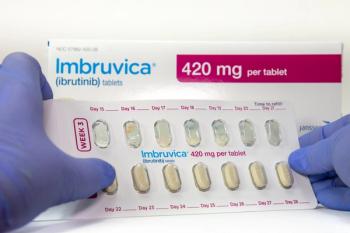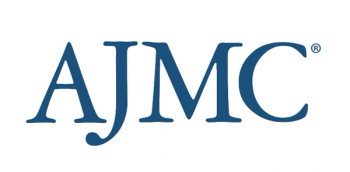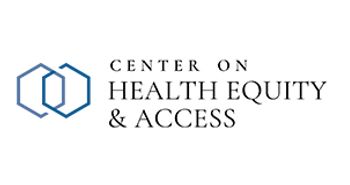
This year’s Conference on Retroviruses and Opportunistic Infections (CROI) features several sessions discussing prevention and treatment of viral infections like HIV and COVID-19.

This year’s Conference on Retroviruses and Opportunistic Infections (CROI) features several sessions discussing prevention and treatment of viral infections like HIV and COVID-19.

Optimizing telehealth during public health emergencies to minimize in-person appointments puts less burden on patients and may lead to better outcomes, according to Chun Chao, PhD, MS, of Kaiser Permanente Southern California.

Information on health equity was removed by the federal government for both the Children’s Health Insurance Program and Medicaid.

Enhanced premium tax credits (PTCs) have made marketplace health insurance more affordable, and eliminating them could have sweeping impacts on consumers and the health care industry, according to a new report.

A dermatology expert panel confirms image-guided superficial radiation therapy as a safe, effective first-line treatment for select nonmelanoma skin cancer cases.

Posters presented at the Association of Cancer Care Centers (ACCC) opening session covered initiatives to boost clinical trial diversity and address disparities in bladder cancer trials.

Dosing has started in a clinical evaluating peluntamig, which targets DLL3 and CD47, combined with chemotherapy in patients with DLL3-expressing small cell lung cancer and neuroendocrine carcinoma.

Jay Bhattacharya, MD, PhD, defended his vision for the National Institutes of Health in a Senate committee confirmation hearing, tackling concerns on research funding, public trust, and scientific integrity.

Advancements in ocular technology, teleretinal imaging, and low-vision aids, including artificial intelligence-powered smart glasses, were highlighted in research posters at the Southeastern Congress of Optometry 2025.

Strict changes to immigration policies nationwide create a public health crisis in overcrowded detention centers, draining taxpayer dollars and diminishing undocumented immigrants' contributions to subsidies.

Clinical trials for diabetic macular edema (DME) continue to see disparities in enrollment.

A study investigated the incidence of postoperative urinary tract infections (UTIs) in patients undergoing spinal fusion for deformities, finding that patients with more than 12 levels fused had the highest UTI rates.

Health care providers must recognize and address the high prevalence of anxiety in gastroenterology (GI) and hepatology outpatients, as its bidirectional relationship with chronic conditions can significantly impact both physical and emotional wellbeing, according to a global review.

Ibrutinib remains a key treatment for relapsed chronic lymphocytic leukemia (CLL), but findings suggest that combining it with other therapies can improve response rates and may allow for treatment discontinuation in some patients.

Expanding coverage and access to glucagon-like peptide-1 (GLP-1) medication can be beneficial for all with the cooperation of multiple parties in health care.

The 2025 American Academy of Dermatology (AAD) Annual Meeting introduces over 50 new sessions and debuts an opening ceremony, featuring a fireside chat with lifestyle expert and entrepreneur Martha Stewart.

This article presents challenges and solutions regarding health care–focused large language models (LLMs) and summarizes key recommendations from major regulatory and governance bodies for LLM development, implementation, and maintenance.

The US Multi-Society Task Force updates 2014 recommendations, emphasizing split-dose prep, diet flexibility, and quality tracking.


Rebecca Haberman, MD, of NYU Langone Health, highlights precision medicine and potential prevention strategies, two areas of promising psoriatic arthritis research.

Attendees and experts from the Southeastern Educational Congress of Optometry (SECO) 2025 meeting highlight research and sessions they will take away.

The FDA approved Stoboclo and Osenvelt, denosumab biosimilars that could offer more affordable treatment options for osteoporosis and bone loss in various patient populations.

A survey of HIV health care providers in the US revealed the various approaches that providers took for prescribing antiretroviral therapy (ART).

Tislelizumab plus chemotherapy received FDA approval as a frontline therapy for individuals with unresectable or metastatic esophageal squamous cell carcinoma (ESCC) whose tumors express PD-L1.

This investigation analyzes public data on adult patients from the 2017 National Health Interview Survey, including how often they were treated with respect and could see health care providers who shared their cultural views.

The Center on Health Equity & Access delves into the latest research, policy shifts, and expert viewpoints on advancing equity and improving access to care.

A new clinical trial finds no cardiovascular benefit from high-dose multivitamins, with or without chelation therapy, in patients with diabetes and past myocardial infarction.

This new report is not the first to highlight cervical cancer disparities among women in the US.

Brianna Rhue, OD, FAAO, discusses the pitfalls of myopia treatment and accessibility of that treatment.

These findings may not be generalizable to uninsured patients with ovarian cancer, who face unique barriers to care compared with insured patients.

259 Prospect Plains Rd, Bldg H
Cranbury, NJ 08512
© 2025 MJH Life Sciences®
All rights reserved.
